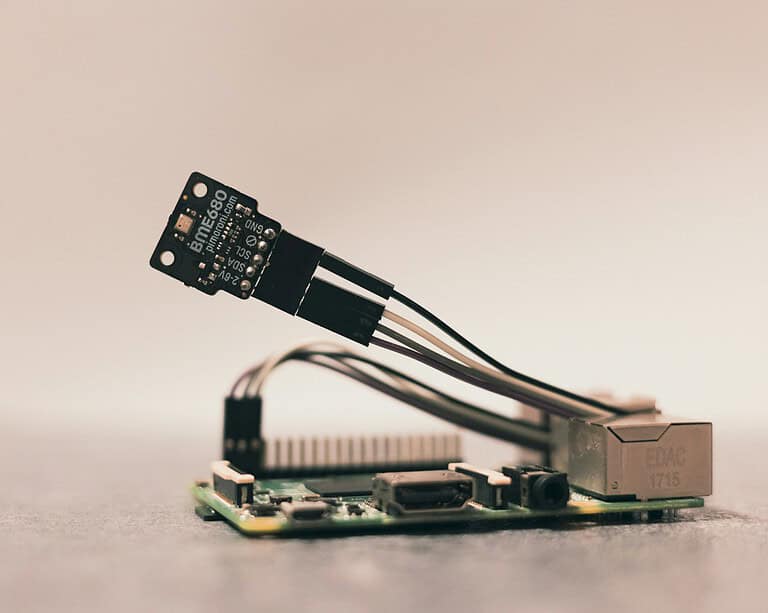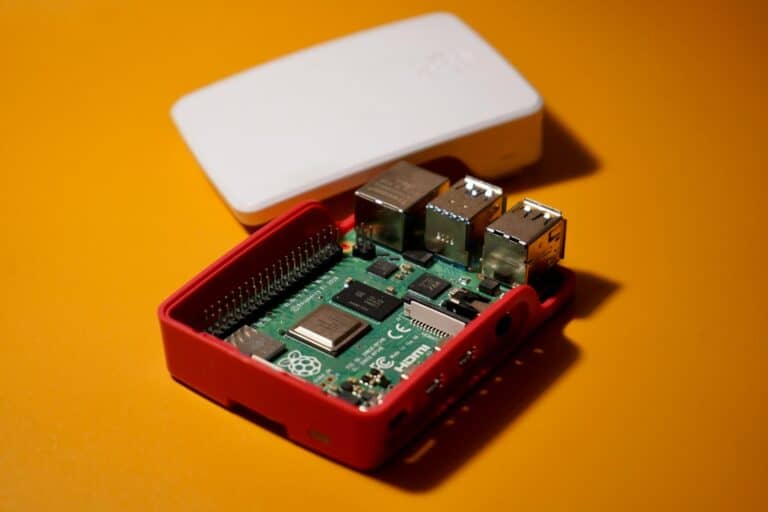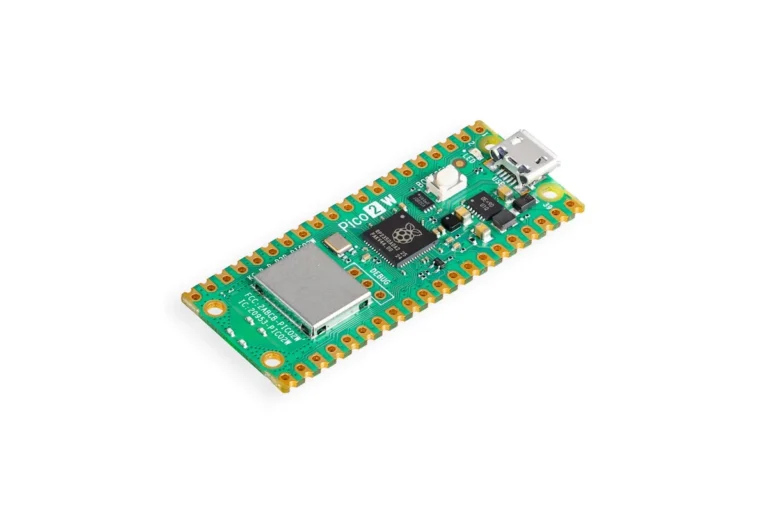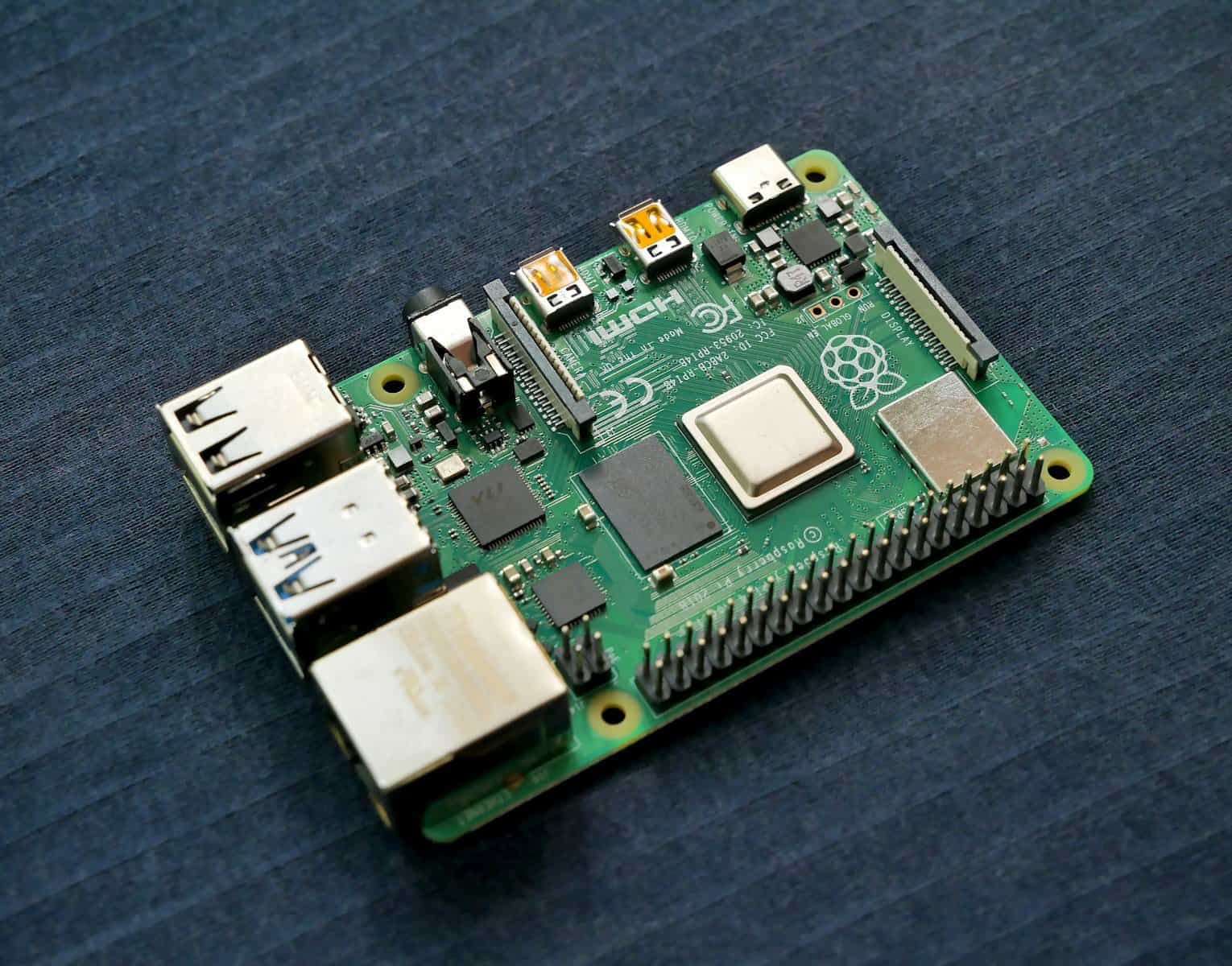
Raspberry Pi alternatives offer solutions for those seeking single-board computers with different features or availability. These compact devices provide versatile computing power for various projects and applications. Single-board computers from different manufacturers present options for users facing Raspberry Pi shortages or needing specific capabilities.
The market for alternative single-board computers continues to grow. New models emerge with improved processing power, memory, and connectivity options. These alternatives cater to diverse needs in areas such as IoT, AI, media centers, and educational projects.
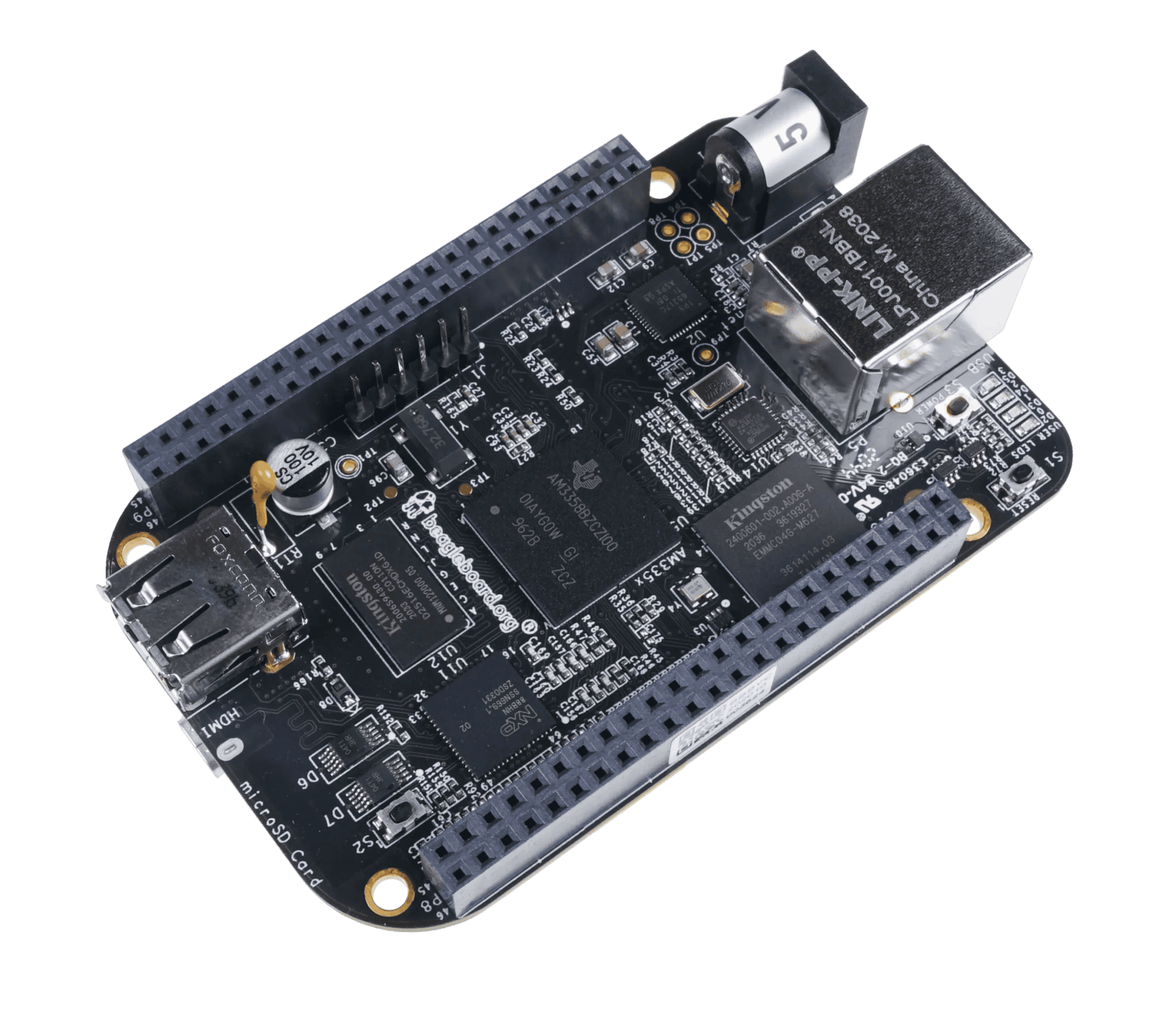
Top 10 Raspberry Pi Alternatives: Compared
| Rank | SBC | Processor | RAM | GPU | Connectivity | Unique Feature | Price Range |
|---|---|---|---|---|---|---|---|
| 1 | BeagleBone Black | ARM Cortex-A8 | 512MB | N/A | GPIO, Ethernet, UART | Extensive GPIO support | ~$50 |
| 2 | Odroid-C4 | Amlogic S905X3 | 4GB | Mali-G31 MP2 | Gigabit Ethernet, USB 3.0 | Android support | ~$60 |
| 3 | ASUS Tinker Board | ARM Cortex-A17 | 2GB | Mali-T764 | Wi-Fi, Bluetooth, GPIO | High GPU performance | ~$80 |
| 4 | Banana Pi M5 | Cortex-A55 | 4GB | Mali-G31 MP2 | Gigabit Ethernet, USB 3.0 | Affordable 4K media support | ~$60 |
| 5 | NanoPi R4S | Cortex-A73 | 4GB | Mali-T864 | Dual Gigabit Ethernet | Excellent for network projects | ~$60 |
| 6 | Rock Pi 4 | Rockchip RK3399 | 4GB | Mali-T860 | PCIe, Wi-Fi, Bluetooth | PCIe expansion slot | ~$70 |
| 7 | Orange Pi 4 | Rockchip RK3399 | 4GB | Mali-T860 | Wi-Fi, Bluetooth, GPIO | Powerful for multimedia | ~$50 |
| 8 | Khadas VIM3 | Amlogic A311D | 4GB | Mali-G52 MP4 | Wi-Fi, Bluetooth, PCIe | AI-focused NPU (5 TOPS) | ~$100 |
| 9 | Le Potato | Amlogic S905X | 2GB | Mali-450 | Wi-Fi, GPIO | Open-source and affordable | ~$35 |
| 10 | LattePanda Delta | Intel Celeron N4100 | 4GB | Intel UHD 600 | Wi-Fi, Bluetooth, USB 3.0 | Runs full Windows/Linux | ~$150 |
1) BeagleBone Black
The BeagleBone Black is a powerful single-board computer that offers an alternative to the Raspberry Pi. It features a single-core ARM Cortex-A8 processor and 512MB of RAM, making it suitable for embedded systems and industrial applications.
One of the BeagleBone Black’s strengths is its extensive GPIO capabilities. It provides 65 GPIO pins, allowing for a wide range of hardware interfacing options. This makes it an excellent choice for projects that require multiple connections to external devices.

The board supports various communication protocols, including I2C, SPI, and UART. These features enable developers to create complex projects with multiple connected components. The BeagleBone Black also comes with 4GB of onboard eMMC storage, providing ample space for operating systems and applications.
While the BeagleBone Black may not match the raw processing power of newer Raspberry Pi models, it excels in specific use cases. Its compact design and low power consumption make it ideal for portable or battery-powered projects.
The BeagleBone Black runs on Linux-based operating systems, offering flexibility for developers. Its strong community support and extensive documentation make it a popular choice for both beginners and experienced users in the single-board computer market.
BeagleBone Black: Pros and Cons
Pros:
- Extensive GPIO capabilities (65 pins).
- Low power consumption, ideal for portable projects.
- Suitable for industrial and embedded systems.
- Strong community support and detailed documentation.
Cons:
- Limited processing power compared to newer boards.
- Only 512MB of RAM may restrict multitasking.
- Higher price point for its specs compared to budget options.
2) Odroid-C4
The Odroid-C4 stands out as a capable Raspberry Pi alternative. This single-board computer, developed by HardKernel, offers impressive performance at a competitive price point.
The Odroid-C4 features an Amlogic S905X3 quad-core processor, which outperforms the Raspberry Pi 4 in certain benchmarks. It comes equipped with 4GB of RAM, providing ample memory for various projects.
One of the C4’s strengths lies in its graphics capabilities. The Mali-G31 MP2 GPU makes it well-suited for multimedia applications and gaming. This makes the Odroid-C4 an attractive option for developers working on visually demanding projects.
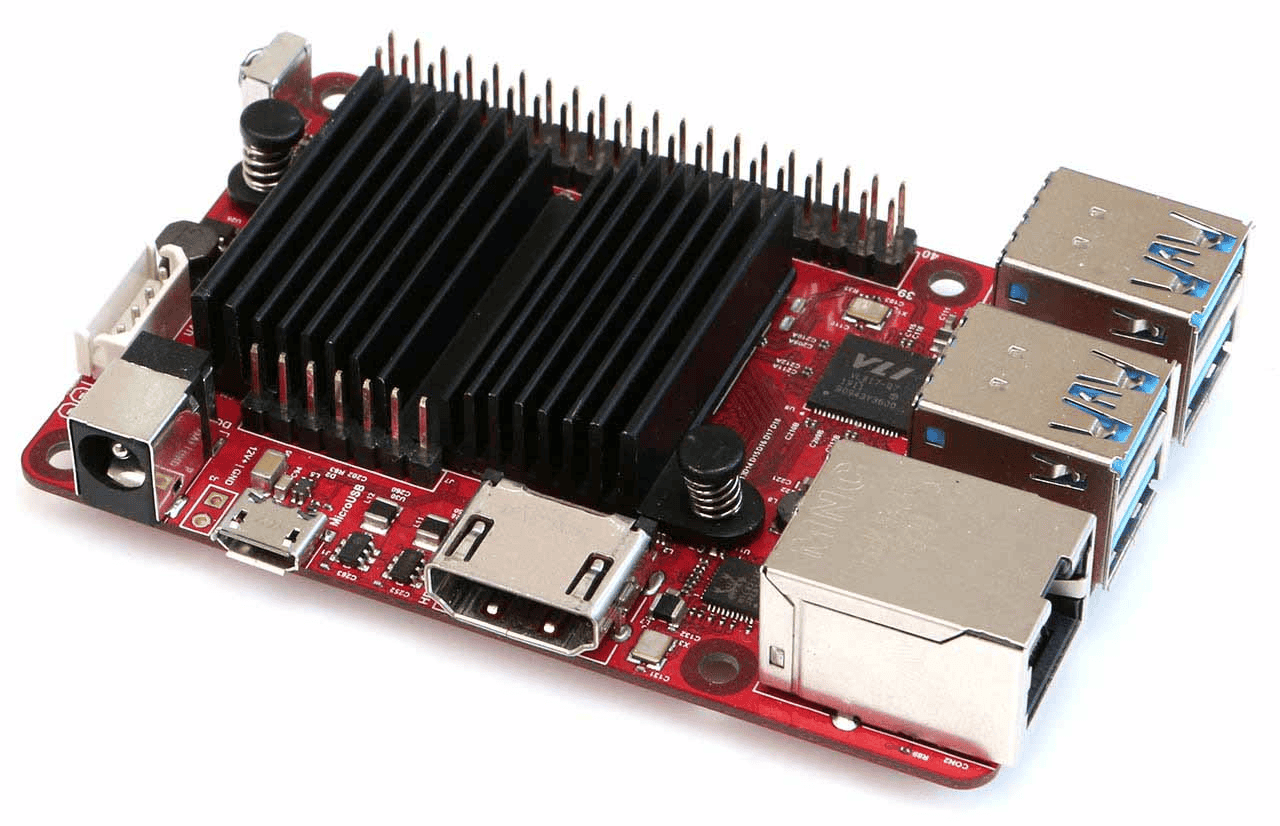
The board supports eMMC storage, allowing for faster boot times and improved overall system responsiveness compared to traditional SD card storage. It also includes Gigabit Ethernet and four USB 3.0 ports for connectivity.
Android compatibility sets the Odroid-C4 apart from many other single-board computers. This feature expands its potential applications, particularly in commercial settings where Android support is required.
While the Odroid-C4 offers strong performance, it may not be the best choice for all projects. Its CPU, though competent, isn’t the most powerful among Raspberry Pi alternatives. Users should consider their specific needs when deciding between the C4 and other options.
Odroid-C4: Pros and Cons
Pros:
- Powerful Amlogic S905X3 quad-core processor.
- Mali-G31 MP2 GPU supports multimedia applications.
- 4GB of RAM for smooth multitasking.
- eMMC storage support for faster boot times.
Cons:
- Limited GPIO capabilities compared to some competitors.
- No built-in Wi-Fi requires external adapters.
- Slightly pricier than basic alternatives.
3) ASUS Tinker Board
The ASUS Tinker Board is a powerful single-board computer that rivals the Raspberry Pi. It features a quad-core ARM Cortex-A17 processor clocked at 1.8GHz, outpacing the Raspberry Pi 4’s 1.5GHz ARM Cortex-A72 CPU.
This board maintains the same form factor as the Raspberry Pi, measuring 85 x 56 mm. This compatibility allows users to easily swap between the two devices in existing projects.
The Tinker Board S R2.0 offers improved performance over its predecessor. It comes equipped with 2GB of RAM and 16GB of onboard eMMC storage, providing faster boot times and increased stability for demanding applications.
ASUS provides several operating system options for the Tinker Board. These include TinkerOS (based on Debian), Android, and specialized distributions for media centers or retro gaming.
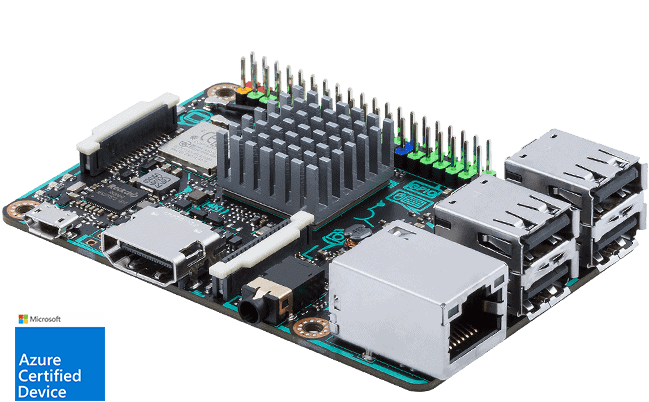
The device supports 4K video output, making it suitable for high-resolution displays and media applications. Its GPU performance surpasses that of many competing single-board computers.
For makers and hobbyists, the Tinker Board includes a 40-pin GPIO header. This feature enables connection to various sensors, displays, and other peripherals, expanding its potential use cases.
While the ASUS Tinker Board may come at a higher price point than some alternatives, its performance and feature set make it a compelling option for users seeking more power in a compact package.
ASUS Tinker Board: Pros and Cons
Pros:
- High-performance quad-core ARM Cortex-A17 CPU.
- Supports 4K video output for media applications.
- 16GB eMMC storage ensures faster performance.
- Compatible with Raspberry Pi form factor and accessories.
Cons:
- Higher price point compared to similar alternatives.
- Limited community compared to Raspberry Pi.
- Can run hot under heavy loads without additional cooling.
4) Banana Pi M5
The Banana Pi M5 offers a compelling alternative to the Raspberry Pi. This single-board computer packs a punch with its 64-bit quad-core Cortex-A55 processor, clocked at 2.0 GHz. It provides a balance of performance and affordability for various computing projects.
The M5 boasts impressive graphics capabilities. Its Mali-G31 MP2 GPU can handle 4K video output at 60Hz, making it suitable for multimedia applications. The board comes equipped with 4GB of RAM, providing ample memory for multitasking.
Connectivity options on the Banana Pi M5 are plentiful. It features HDMI output, Gigabit Ethernet, and Wi-Fi for networking needs. The board also includes USB 3.0 ports for fast data transfer and external device connections.
Linux enthusiasts will appreciate the M5’s compatibility with various distributions. This flexibility allows users to choose an operating system that best suits their project requirements. The board’s design supports a wide range of applications, from home automation to media centers.
While not as powerful as some newer alternatives, the Banana Pi M5 remains a solid choice for many projects. Its competitive price point and versatile feature set make it an attractive option for hobbyists and developers seeking a reliable Raspberry Pi alternative.
Banana Pi M5: Pros and Cons
Pros:
- Powerful Cortex-A55 processor for multitasking.
- 4K video output capability.
- Affordable price for its feature set.
- Wide range of connectivity options, including USB 3.0.
Cons:
- Software support is less mature compared to Raspberry Pi.
- Smaller community and fewer tutorials.
- Onboard storage is not included.
5) NanoPi R4S
The NanoPi R4S is a powerful Raspberry Pi alternative from FriendlyARM. It features a quad-core ARM Cortex-A73 processor and a Mali-T864 GPU, making it suitable for demanding tasks.
This single-board computer excels in multimedia applications. It can handle 4K video playback at 60 frames per second, surpassing the Raspberry Pi 4’s capabilities in this area.
The NanoPi R4S offers impressive networking capabilities. It includes two Gigabit Ethernet ports, making it an excellent choice for router or network-related projects.
Memory options for the NanoPi R4S include 1GB, 2GB, or 4GB of RAM. This flexibility allows users to choose the configuration that best fits their needs and budget.
Unlike some alternatives, the NanoPi R4S does not include onboard storage. Users will need to add their own storage solution, typically via microSD card or USB drive.
The board’s compact size and metal case option make it suitable for various applications. It can serve as a home server, media center, or network device in both personal and professional settings.
NanoPi R4S: Pros and Cons
Pros:
- Dual Gigabit Ethernet ports for advanced networking projects.
- Compact design with multiple RAM options.
- Excellent 4K video playback capability.
- Robust processing power with ARM Cortex-A73 cores.
Cons:
- No built-in Wi-Fi or Bluetooth.
- Lack of onboard storage requires additional components.
- Smaller community compared to mainstream SBCs.
6) Rock Pi 4
The Rock Pi 4 is a powerful single-board computer that serves as a viable alternative to the Raspberry Pi. It features a hexa-core Rockchip RK3399 processor, which offers impressive performance for its size and price point.
This board comes in several configurations, with RAM options ranging from 1GB to 4GB. The Rock Pi 4 also includes USB 3.0 ports, Gigabit Ethernet, and Wi-Fi connectivity, making it suitable for various projects and applications.
One standout feature of the Rock Pi 4 is its PCIe expansion slot. This allows users to add components like SSDs or other peripherals, expanding the board’s capabilities beyond those of standard Raspberry Pi models.
The Rock Pi 4 supports multiple operating systems, including Ubuntu, Debian, and Android. This flexibility enables users to choose the most appropriate OS for their specific needs and preferences.
Pricing for the Rock Pi 4 is competitive, often coming in lower than comparable Raspberry Pi models. This makes it an attractive option for budget-conscious makers and developers seeking high performance at a lower cost.
While the Rock Pi 4 offers many advantages, it’s worth noting that the Raspberry Pi ecosystem has more extensive community support and resources. However, the Rock Pi 4’s strong hardware specifications and expanding user base make it a compelling choice for many projects.
Rock Pi 4: Pros and Cons
Pros:
- Hexa-core Rockchip RK3399 processor provides excellent performance.
- PCIe expansion slot for added functionality.
- Multiple OS support, including Android and Ubuntu.
- Competitive pricing for its specs.
Cons:
- Fewer GPIO pins than the Raspberry Pi.
- Slightly larger power consumption.
- Community resources are growing but still limited.
7) Orange Pi 4
The Orange Pi 4 is a notable Raspberry Pi alternative that offers impressive features and performance. It boasts a powerful Rockchip RK3399 six-core processor, which includes two high-performance Cortex-A72 cores and four energy-efficient Cortex-A53 cores.
This single-board computer comes with 4GB of LPDDR4 RAM, providing ample memory for various projects and applications. It also features a Mali-T860 GPU, capable of handling graphics-intensive tasks and 4K video playback.
The Orange Pi 4 offers versatile connectivity options. It includes Gigabit Ethernet, Wi-Fi, and Bluetooth, allowing for easy network integration and wireless communication. The board also provides multiple USB ports, HDMI output, and a 26-pin GPIO header for connecting various peripherals and sensors.
Storage options on the Orange Pi 4 are flexible. It supports microSD cards and eMMC modules, giving users choices for expanding storage capacity. The board is compatible with popular operating systems like Android, Ubuntu, and Debian.
For developers and hobbyists, the Orange Pi 4 presents an attractive option. Its processing power and features make it suitable for a wide range of projects, from home automation to media centers and even small-scale server applications.
Orange Pi 4: Pros and Cons
Pros:
- Powerful Rockchip RK3399 six-core processor.
- Mali-T860 GPU for 4K video playback and gaming.
- Affordable price for high-end specs.
- Versatile connectivity options with Wi-Fi, Bluetooth, and Gigabit Ethernet.
Cons:
- Compatibility issues with some Raspberry Pi accessories.
- Software ecosystem is less mature.
- Documentation can be sparse for beginners.
8) Khadas VIM3
The Khadas VIM3 is a powerful single-board computer that competes with the Raspberry Pi. It features an Amlogic A311D processor with four Cortex-A73 cores running at 2.2GHz and two Cortex-A53 cores at 1.8GHz.
This board comes with 4GB of LPDDR4 RAM, offering ample memory for various projects. The VIM3 includes a Mali G52 MP4 GPU clocked at 800MHz, providing strong graphics performance.
One standout feature is the VIM3’s neural processing unit (NPU), capable of 5 TOPS (trillion operations per second). This makes it suitable for AI and machine learning applications.
The VIM3 supports 4K video output through its HDMI port. It also has a MIPI-DSI interface for 1080p video output, expanding display options.
Connectivity options include Wi-Fi, Bluetooth, and Gigabit Ethernet. The board offers multiple USB ports and a PCIe interface for additional expansion.
Temperature management is a strong point for the VIM3. It can maintain temperatures below 75°C under load, with throttling measures in place to prevent overheating.
The VIM3 runs Ubuntu 18.04 64-bit out of the box, taking full advantage of its ARM architecture. This allows it to use Armv8 crypto extensions, potentially boosting performance in certain applications.
Khadas VIM3: Pros and Cons
Pros:
- Amlogic A311D processor with AI-focused NPU.
- Strong GPU performance with Mali-G52 MP4.
- Wide OS compatibility, including Ubuntu and Android.
- Efficient thermal management with low overheating risk.
Cons:
- Higher price compared to most alternatives.
- Limited GPIO pins for hardware interfacing.
- Smaller user community compared to Raspberry Pi.
9) Libre Computer Board AML-S905X-CC
The Libre Computer Board AML-S905X-CC, also known as “Le Potato,” is a popular Raspberry Pi alternative. This single-board computer offers comparable performance to the Raspberry Pi 3B+ at a similar price point.
Le Potato features an Amlogic S905X quad-core ARM Cortex-A53 processor. It supports up to 2GB of DDR3 RAM, providing ample memory for various projects. The board includes HDMI output, supporting 4K video playback.
For connectivity, Le Potato offers four USB 2.0 ports, Ethernet, and Wi-Fi capabilities. It also includes 40 GPIO pins, making it compatible with many Raspberry Pi accessories and add-ons.
One advantage of Le Potato is its open-source nature. This allows users to modify and customize the hardware and software to suit their specific needs. The board runs various operating systems, including Linux distributions and Android.
Le Potato excels in media applications. Its powerful processor and 4K video support make it ideal for streaming audio and video content. This capability positions it as a strong choice for home theater setups.
Libre Computer Board AML-S905X-CC (Le Potato): Pros and Cons
Pros:
- Affordable and comparable to Raspberry Pi 3B+.
- 4K video playback capability.
- Open-source design encourages customization.
- Compatible with Raspberry Pi accessories.
Cons:
- No built-in Wi-Fi or Bluetooth.
- Older hardware compared to newer SBCs.
- Limited RAM options (max 2GB).
10) LattePanda Delta
The LattePanda Delta is a single-board computer that offers an alternative to the Raspberry Pi. It features an Intel Celeron N4100 processor, which provides more power than typical ARM-based boards.
With 4GB of RAM and 32GB of eMMC storage, the Delta supports multitasking and quick boot times. It runs full Windows 10 or Linux operating systems, giving users flexibility in their choice of software.
The board includes built-in Wi-Fi and Bluetooth connectivity. It also offers a range of ports, including USB 3.0, HDMI, and Gigabit Ethernet. This allows for easy connection to peripherals and displays.
One unique feature is its Arduino co-processor. This enables the Delta to interface with Arduino shields and sensors, expanding its capabilities for makers and hobbyists.
The LattePanda Delta’s x86 architecture makes it suitable for tasks that require more processing power. It can handle video editing, 3D rendering, and running multiple virtual machines.
While more expensive than a Raspberry Pi, the Delta offers increased performance. Its ability to run desktop-class software makes it a strong choice for users needing a compact yet capable computer.
LattePanda Delta: Pros and Cons
Pros:
- Desktop-class performance with an Intel Celeron processor.
- Runs Windows 10 and Linux for versatile applications.
- Built-in Arduino co-processor for hobbyist projects.
- Strong multitasking with 4GB RAM and 32GB eMMC storage.
Cons:
- High price compared to most SBCs.
- Power-hungry compared to ARM-based boards.
- Larger size may not fit all projects requiring compact boards.
Understanding Raspberry Pi Alternatives
Raspberry Pi alternatives offer diverse options for single-board computers with varying specifications and capabilities. These alternatives cater to different needs and project requirements.
Key Features to Consider
Processing power is a crucial factor when selecting a Raspberry Pi alternative. Many options provide higher clock speeds and more powerful CPUs. For instance, the Orange Pi 5 Plus offers increased performance compared to the Raspberry Pi 4.
Memory capacity varies among alternatives. Some boards support up to 32GB of DDR4 RAM, allowing for more demanding applications.
GPU capabilities differ across alternatives. The Orange Pi 5 Plus includes a Mali-G31 MP2 GPU, enabling 4K video playback.
Connectivity options are important. Alternatives may offer different combinations of USB ports, HDMI outputs, and network interfaces.
Some boards include specialized hardware. The Orange Pi 5 Plus features a Neural Processing Unit (NPU) for machine learning tasks.
Common Use Cases
Education and learning remain popular uses for single-board computers. Affordable options like the Libre Computer Board provide an accessible platform for students to explore computing concepts.
Media centers benefit from boards with strong video capabilities. The Orange Pi 5 Plus’s 4K playback support makes it suitable for home entertainment systems.
IoT projects often utilize single-board computers. Alternatives with varied connectivity options can serve as hubs for smart home devices or industrial sensors.
AI and machine learning applications are growing. Boards with NPUs or higher processing power can handle tasks like image recognition or natural language processing.
DIY enthusiasts use these computers for custom projects. From robotics to home automation, the versatility of these boards enables a wide range of creative applications.
Comparative Analysis
Raspberry Pi alternatives offer varying performance levels and price points. These factors significantly influence purchasing decisions for makers and developers.
Performance Comparison
Single-board computers (SBCs) like the Banana Pi M3 and BeagleBone Black provide different performance profiles compared to Raspberry Pi. The Banana Pi M3 features a 1.8GHz Octa-Core Allwinner A83T CPU and 2GB of RAM, offering more processing power for demanding tasks. This makes it suitable for AI projects and data analysis.
The BeagleBone Black, while less powerful, excels in GPIO capabilities. It’s favored for prototyping and development due to its extensive pin layout.
Some alternatives boast up to 4GB of RAM and PCIe expansion options. These features enable better multitasking and connectivity for advanced projects.
Cost-Effectiveness
Price plays a crucial role in selecting Raspberry Pi alternatives. Many options aim to provide similar or enhanced capabilities at competitive prices.
Some alternatives may cost more but offer greater value through increased performance or specialized features. For example, boards with built-in storage or wireless connectivity can reduce overall project costs by eliminating the need for additional components.
Budget-friendly options exist for hobbyists and educational purposes. These boards often sacrifice some performance or features to maintain a lower price point.
Makers should consider long-term costs, including power consumption and compatibility with existing peripherals, when evaluating the cost-effectiveness of different SBC options.
Frequently Asked Questions
Raspberry Pi alternatives offer diverse options for single-board computing projects. These devices cater to various needs, from cost-effective solutions to high-performance boards for specific applications.
Which single-board computers are considered the best alternatives to the Raspberry Pi for general use?
The BeagleBone Black and Odroid-C4 stand out as top alternatives for general use. BeagleBone Black provides extensive GPIO options and real-time processing capabilities. Odroid-C4 offers higher performance with its quad-core CPU and 4GB of RAM.
What cost-effective options are available for those seeking alternatives to the Raspberry Pi?
The Banana Pi M5 presents an affordable option with competitive specs. It features an ARM Cortex-A55 processor and supports 4K video output. Another budget-friendly choice is the NanoPi R4S, which excels in networking applications.
How do Raspberry Pi alternatives compare when used for gaming and emulation purposes?
The ASUS Tinker Board shines for gaming and emulation. Its powerful GPU handles retro gaming emulation smoothly. The Odroid-C4 also performs well, supporting various emulators and offering good graphics capabilities for its price point.
Can you recommend a single-board computer suitable for NAS that rivals the Raspberry Pi?
The NanoPi R4S works well for NAS setups. It features dual Gigabit Ethernet ports and USB 3.0, making it ideal for file serving and network storage tasks. The Odroid-C4 also serves as a capable NAS alternative with its eMMC storage option.
In the context of educational and hobbyist projects, what are some viable competitors to the Raspberry Pi?
BeagleBone Black proves valuable for educational projects due to its extensive documentation and community support. The Banana Pi M5 offers a familiar layout to Raspberry Pi, easing the transition for hobbyists exploring alternatives.
When considering processing power and connectivity, which single-board computers stand out as alternatives to the Raspberry Pi?
The ASUS Tinker Board leads in processing power with its quad-core ARM Cortex-A17 CPU. For connectivity, the NanoPi R4S excels with its dual Gigabit Ethernet ports. The Odroid-C4 balances both aspects, offering strong performance and versatile connectivity options.
Which single-board computer is the best alternative to the Raspberry Pi for general use?
The BeagleBone Black and Odroid-C4 offer great general-use performance with extensive GPIO options and strong multimedia capabilities, respectively.
What are the most cost-effective Raspberry Pi alternatives?
The Banana Pi M5 and NanoPi R4S provide budget-friendly options with robust features for various applications, including multimedia and networking.
Which board excels in gaming and emulation?
The ASUS Tinker Board is ideal for gaming, with its powerful GPU, while the Odroid-C4 also performs well for gaming and emulation with its solid processing and graphics capabilities.

